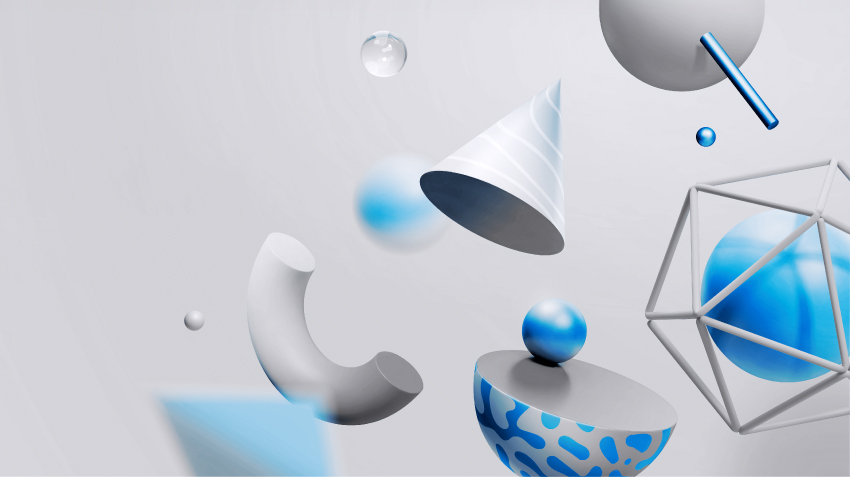AI Structural Failure Inspection is a tech demo that showcases how AI can help detect cracks and potential risks in buildings and infrastructure. Projects like this are not just experiments—they’re a way for our team in the Training Department to explore new ideas, experiment with proof-of-concept, and develop practical AI expertise. At the same time, these demos demonstrate AMC Bridge’s know-how, engage potential clients, and highlight practical business value.
Construction, one of the core industries AMC Bridge serves, is only beginning to adopt AI tools—but the potential is huge: reducing inspection risks, cutting costs, and saving engineers’ time.
We asked Oleksandr Myroshnychenko, Manager in the Training Department, to walk us through the project—and to explain what it really takes to teach a neural network to see what humans might miss.

Automating a Risky Job
Imagine you’re inspecting a bridge. Not a small model on your desk—a real one, over a river. You dive under the water or climb along massive concrete pillars, trying to find cracks with your own eyes. Some parts are slippery, others are high above the ground, and every angle hides its own challenge. Sounds risky? It is.
That’s exactly why we built the AI Construction Failure Inspection—a technology demonstration that uses computer vision to analyze photo and video materials and automatically highlight defects in concrete structures. Instead of sending people to do something potentially dangerous, we let AI handle the initial inspection.
The idea is simple: you upload footage from a drone or underwater camera, and the app analyzes it for cracks or structural problems. But here’s the tricky part—AI doesn’t automatically know how big something is in real life. A tiny crack on one image could mean nothing, but the same-looking line could be a disaster if each pixel equals a meter.
To address this, we added a scaling grid that helps the model understand real-world dimensions. Combined with machine learning, this approach makes it possible to evaluate bridges, overpasses, dams—basically, any structure where manual inspection is either complicated, expensive, or risky.
Now, instead of sending divers or a full inspection crew, drone operators can film the structure, and AI does the analysis. Human experts still review the results, but the dangerous and routine part? Automated.
Teaching AI to “See” Cracks
We used Google TensorFlow™ for this project—one of the most flexible and powerful frameworks for training AI models. You can make it do pretty much anything once you know what you want. In our case, it was about teaching it to recognize cracks in concrete.
AI Structural Failure Inspection offers the following functionality:
- Setting up photo and video analysis parameters.
- Analyzing photos and videos.
- Highlighting existing cracks.
- Identifying dangerous cracks.
- Viewing the analysis results in PDF.
But before the model could do all that, we had to teach it what cracks actually look like—and that turned out to be a whole adventure on its own.
The dataset was our biggest challenge. To train an AI, you should have thousands of examples. If you need 50 images of cracks—no problem. 500? Still doable. But thousands? That’s where things get tricky. We basically combed through the entire Internet looking for cracks—all shapes, all sizes, all moods. At some point, one of our teammates even went out with his phone, wandering around the neighborhood and snapping pictures of the real cracks on walls and walkways around the house. Yep, we took the dataset very seriously. But hey, that’s how the model really learns—it starts spotting even the tiniest flaws like a true perfectionist.
What Skills Does It Take to Build Something Like This?
When you work with a neural network, you’ve got to speak its language—Python. It’s the go-to tool for AI. And, of course, you need to understand how machine learning models are trained and fine-tuned. Web development skills help too, because this is still a web-based app in the end.
But the key skill? Patience. Preparing and cleaning data can take 30–40% of the whole project time. You can’t skip it. If your dataset is messy, your model will be too. So it’s a mix of coding, curiosity, and a lot of attention to detail.
The cool part is how much you learn along the way. You see how AI reacts to different inputs, how it improves, and where it still “thinks” wrong. It’s like teaching a child to recognize objects—only this one learns a thousand times faster.
AI as a Tool, Not a Replacement
AI isn’t replacing people. It’s helping them work smarter and safer. Think of how the Internet became just part of everything we do—AI is heading in the same direction. In construction, it can completely change how we inspect, maintain, and design things.
We’re talking about predictive maintenance, automated damage detection, maybe even AI-assisted design in the future. Engineers will still make decisions—AI will just help them get there faster and with better information.
And honestly, that’s what makes working on technology demos like this so exciting. You’re not just coding another app—you’re experimenting with something that could redefine an entire industry.
When I see the demo working, spotting a tiny crack that a human might have missed, I think—this is what technology should do. Make work safer, smarter, and just a bit more inspiring.
All third-party trademarks belong to their respective owners. For more details, please refer to the Third-Party Trademarks list on the Privacy and legal notices page.
Return to blog page


